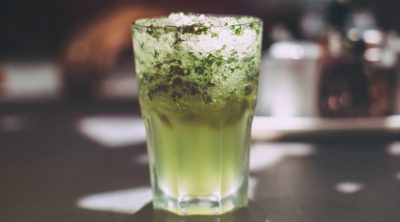
What is the difference between a single malt and blended whisky? Which is the better option of the two? Find answers to these questions and more in this article.
‘Nectar of Gods’, ‘An Indulgence for the Senses’, ‘Water of Life’ – call it what you like, it’s the ultimate Scotch whisky that we are talking about. Talk about love for a literal high! Scotch, as we know, is a synonym for sophistication and class. And those of you who are connoisseurs of spirits, having knowledge about the make, the type and brand becomes a prerequisite. After all, having a taste for all the good things in life is not a bad idea; and absolutely not when it comes to treating your taste buds to something good.
What Differentiates Single Malt from Blended Scotch
Not every whiskey is called Scotch; the name itself suggests that it is region-specific. You can make whiskey the world over, but you can never call it Scotch, unless it is made in Scotland. The basic difference between a single malt and blended Scotch is the distillation process. Single malt whisky is produced and bottled in a single distillery, whereas blended, as the name suggests, is a blend of two or more malt and grain whiskies. Let’s dig into the details that follow.
The Making of Scotch: The basic ingredient of Scotch whisky happens to be malted barley. Though at times it can be prepared using rye or wheat, barley is the most preferred grain for producing Scotch. Other than barley, the other ingredients include water, yeast and an additive for coloring.
Before we get to the differences, a little insight into the actual process of producing Scotch would be helpful. So here goes …
The Process
The process of making Scotch whisky involves the following steps: malting, drying, mashing and fermenting, which is followed by distillation and finally, maturation.
Malting: This is the process of soaking the grains in water for 2 or more days and allowing it to germinate. It is an essential factor for a malt whisky; however, this step can be skipped in the case of grain whisky.
Drying: The germinated grain needs to be heat-treated to stop the germination process. Generally, peat smoke is introduced at this stage to give the whisky a smoky flavor and aroma.
Mashing: The dried malt is coarsely ground into a flour called grist, which is then mixed with hot water to create mash to convert the starches into sugars.
Fermentation: Once the sugary liquid is cooled, yeast is added to boost the fermentation process.
Distillation: Distillation is a process wherein the undesired impurities like methanol are removed and the alcohol content is increased.
Malt Whisky: Generally, the Wash, as it is called, is distilled twice; first in a wash still where the liquid is heated to the boiling point so that the alcohol evaporates and travels to the top of the still and into a condenser where it is cooled and returns to the liquid state. After this process, the resultant liquid contains about 20% alcohol and is termed as low wine. A second distillation is then carried out in a spirit still and the resultant distillation is divided into three cuts, of which only the middle cut or the heart of the run is used. The remaining two cuts are re-distilled as they are relatively of substandard material. At this stage, the low wine contains about 60-75% alcohol content.
Grain Whisky: Grain whisky is distilled in a column still, which consists of two columns called analyzer (washes the liquid with steam) and rectifier (carries the alcohol till it condenses to the required strength). It requires a single distillation to achieve the desired alcohol content, unlike malt whisky that requires two distillations. Grain whisky is produced by a continuous fractional distillation process where the mixture is separated into its component parts or fractions by heating them to temperatures, which will cause fractions of the liquid to evaporate.
Maturation: The new-make malt whisky is then diluted and placed in casks to mature. For the maturation process, oak casks which previously contained Sherry, Rum or Bourbon are used. Using such casks lends their characteristics to the actual Scotch that you savor.
| Parameters | Single Malt | Blended Scotch |
| Defining Factors | A single malt whisky is that which is made from water and malted barley, and is distilled at a single distillery. | A blended Scotch whisky is called so when a malt whisky is mixed with grain whisky. |
| What it Actually Means | Confusion rules when we say single malt; what it actually refers to is a single producer or distillery. However, the end product need not necessarily be a single malt but is a perfect blend of malts of varying ages, such that the consistency of the product is maintained. | A blended Scotch can also imply a blend or mixture of 2/3 parts of grain whisky and 1/3 part of malt whisky, not necessarily from the same distillery. A blended Scotch whisky may contain a combination of whiskies from more than 40 to 50 different malt and grain distilleries. |
| Differentiating Factor | Single malt whisky goes through a single batch production; however, the product is a result of a blend of different aged whisky. The taste differs according to the region and distillery whence the final product comes, and the best part is that no two whiskies will ever taste the same. The minimum period for maturation is three years, and the longer the malt is allowed to mature in its wooden abode, the better the final outcome will be. It is not difficult to find a Scotch which has undergone maturation for 15 or more years. | The blending takes place in the presence of a master blender, who ensures the taste of the blend remains consistent throughout. What actually happens in a blended Scotch is that the master blender, samples various malts and grain whiskies and combines them together in a cask and leaves it to mature. The differentiating factor comes in only at the stage of casking, the resultant blend is then left to mature for a minimum period of five years. Apparently, blended Scotch consists of over 90% of the total whisky production in Scotland. |
| Test the Taste Buds | Known for its character and distinct flavor, the single malt Scotch offers an absolute treat to the senses, while keeping you as close to earthiness as possible. | Compared to single malt, it is less stronger and has a more pleasing flavor than the two. However, they lack the flavor and character as the single malt. |
| Cost | Highly priced and a connoisseur’s pride, the price of single malt ranges as per the maturation period of the malt. | As its major ingredient is grain whisky, it makes this variety less pricey and affordable for the general crowd. |
Like I previously mentioned, a connoisseur of spirits would love to indulge in a single malt Scotch thanks to its earthy flavor; hence, it definitely makes a better drink than the blended variety. However, if you aren’t too comfortable with strong earthy flavors, going in for a blended Scotch isn’t a bad idea too. To help you decide on the best brand of Scotch, we have tried to list the varieties of both blended and single malt Scotch; have your pick. You know what they say about indulging in Scotch whisky, “A good whisky should linger in your mind like a fond memory”; absolutely so, for you’ve got to smell it, sip it (yeah!! not gulp down), roll it around and finally swallow it. Ultimately, Scotch is Scotch; no matter what variety you are drinking and it sure is best when had ‘on the rocks‘. Let’s clink to that then, shall we?


